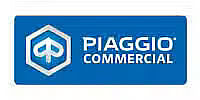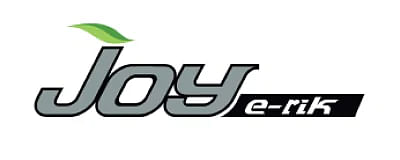Why TPMS is Essential for Fleet Management: Reduce Costs & Improve Safety

For fleet operators, the importance of tyre maintenance cannot be overstated. A single under-inflated truck or bus tyre doesn’t just spell trouble—it can lead to costly downtime, safety hazards, and even regulatory non-compliance. Enter Tyre Pressure Monitoring Systems (TPMS), an innovation that’s revolutionizing the way commercial vehicles are managed. By providing real-time pressure data, TPMS helps fleet managers prevent blowouts, optimize fuel consumption, and extend tyre lifespan. But that’s just the tip of the iceberg.
Understanding TPMS: More Than Just a Sensor
At its core, TPMS is a system designed to keep track of tyre pressure levels, ensuring they remain within recommended limits. But not all TPMS solutions are created equal. There are two primary types:
- Direct TPMS – This system uses sensors inside each tyre to measure exact pressure levels. It’s highly accurate, delivering real-time data straight to the driver or fleet manager.
- Indirect TPMS – Instead of measuring pressure directly, this system relies on wheel speed sensors to estimate fluctuations based on rotational differences. While less precise, it’s still a valuable tool for detecting under-inflation.
The key takeaway? Direct TPMS offers pinpoint accuracy, while indirect TPMS provides a cost-effective alternative for basic monitoring. Regardless of the type, both systems play a crucial role in reducing tyre-related failures and improving overall fleet efficiency.
The Hidden Dangers of Under-Inflated Tyres
Think a slightly under-inflated tyre is no big deal? Think again. A mere 10% drop in tyre pressure can result in a 2% increase in fuel consumption and shorten a tyre’s lifespan by 15%. Worse still, low pressure can lead to overheating, significantly raising the risk of a catastrophic blowout.
With TPMS in place, fleet managers can:
- Prevent Sudden Failures – Instant alerts allow drivers to address pressure issues before they escalate into dangerous situations.
- Improve Handling & Stability – Properly inflated tyres ensure optimal traction and control, crucial for heavy-duty commercial vehicles.
- Reduce Accident Risk – Studies show that nearly 30% of all tyre-related accidents are caused by under-inflation. TPMS acts as a proactive safeguard.
Boosting Operational Efficiency and Cost Savings
Fleet management is all about efficiency—minimizing costs while maximizing vehicle uptime. TPMS directly contributes to these goals in several ways:
- Lower Fuel Costs – Under-inflated tyres create higher rolling resistance, forcing engines to work harder. Keeping pressures optimal can improve fuel efficiency by up to 1.5%, which adds up significantly over a large fleet.
- Extended Tyre Longevity – Uneven wear caused by incorrect pressure accelerates tyre degradation. By maintaining consistent inflation, TPMS extends tyre life by up to 20%, leading to major cost savings.
- Minimized Downtime – Unexpected breakdowns are every fleet manager’s nightmare. TPMS helps predict tyre failures before they happen, reducing the need for emergency roadside repairs and keeping vehicles on the move.
Compliance with Regulations: Avoiding Costly Penalties
Regulatory bodies worldwide are tightening restrictions on commercial vehicle safety, and TPMS is fast becoming a mandatory feature. In regions like the European Union, all new heavy-duty vehicles must be equipped with TPMS as of July 2024. Similar requirements exist in the United States and other global markets.
For fleet operators, staying ahead of these regulations isn’t just about avoiding fines—it’s about reinforcing a reputation for safety, reliability, and environmental responsibility.
Implementing TPMS: A Smart Investment for Fleets

So, how can fleet managers successfully integrate TPMS into their operations? Here’s a step-by-step approach:
- Assess Fleet Needs – Not all TPMS solutions are universal. Consider factors like vehicle type, terrain, and expected mileage when choosing a system.
- Select the Right TPMS – Direct TPMS offers precision, while indirect TPMS provides a more budget-friendly option. Choose based on operational priorities.
- Integrate with Fleet Management Software – Connecting TPMS data to a central system allows for real-time monitoring, predictive analytics, and better maintenance scheduling.
- Train Drivers and Maintenance Teams – Even the best TPMS system is useless without proper usage. Educate teams on interpreting alerts and responding accordingly.
Major brands like MICHELIN Connected Fleet offer advanced TPMS solutions, integrating real-time monitoring with cloud-based fleet management platforms to maximize efficiency and safety.
Conclusion
Tyre maintenance isn’t just about avoiding flats—it’s about saving lives, cutting costs, and ensuring long-term fleet sustainability. TPMS is no longer a luxury but a necessity in the modern commercial vehicle industry. Whether you manage a fleet of trucks, buses, or mixed commercial vehicles, investing in TPMS can mean the difference between profit and loss, safety and risk, efficiency and chaos.
For fleet operators looking to future-proof their business, the message is clear: adopt TPMS now, or pay the price later. Stay tuned with 91trucks for all the latest news and updates related to new launches, commercial vehicles and industry insights. 91trucks is the fastest-growing digital platform aimed at providing you with the latest updates and information related to the commercial vehicle industry.
Latest Truck News
View All Truck NewsRecent Posts
- Mr. Prashant Kumar, Chief General Manager of Marketing and Sales Discusses SML Isuzu's Innovation, Market Growth, and Future Strategies at Bharat Mobility Expo 2025
- वाणिज्यिक ट्रक बिक्री जनवरी 2025: महिंद्रा की बढ़त, टाटा की गिरावट
- Commercial Truck Sales January 2025: Mahindra Rises, Tata Faces Decline
- फ़ूड बस बनाम फ़ूड ट्रक: मोबाइल डाइनिंग का अगला बड़ा चलन
- Truck Fitness Certificate: What It Is and How You Can Get One
- Food Bus vs. Food Truck: The Next Big Trend in Mobile Dining
- ट्रक फिटनेस सर्टिफिकेट: यह क्या है और इसे कैसे प्राप्त करें
- Why TPMS is Essential for Fleet Management: Reduce Costs & Improve Safety
- टाटा ऐस सीरीज़: हर व्यवसाय की ज़रूरत के लिए बेहतरीन कॉम्पैक्ट और कुशल छोटा ट्रक
- महिंद्रा बोलेरो मैक्स पिक-अप सिटी: कीमत, फीचर्स और परफॉर्मेंस रिव्यू
Popular Three Wheelers Brands
 Altigreen
Altigreen Euler Motors
Euler Motors Mahindra
Mahindra Piaggio
Piaggio Bajaj
Bajaj Greaves Mobility
Greaves Mobility ATUL
ATUL TVS
TVS Omega Seiki Mobility
Omega Seiki Mobility Kinetic
Kinetic Lohia
Lohia JSA
JSA YC Electric
YC Electric Udaan
Udaan SN Solar Energy
SN Solar Energy Saarthi
Saarthi Teja (Powered by Greaves)
Teja (Powered by Greaves) Jezza Motors
Jezza Motors GreenRick
GreenRick City Life Electric
City Life Electric Ampere
Ampere Baba Electric
Baba Electric E-Ashwa
E-Ashwa Bahubali E Rickshaw
Bahubali E Rickshaw Dabang
Dabang Deltic
Deltic Keto Motors
Keto Motors Mini Metro
Mini Metro Gayam Motors
Gayam Motors Gem EV
Gem EV Gkon Automotive
Gkon Automotive Skyride
Skyride Thukral Electric
Thukral Electric Baxy
Baxy Eblu
Eblu Hexall
Hexall Joy
Joy Montra
Montra Star
Star Dandera
Dandera EKA
EKA Khalsa
Khalsa
91trucks is a rapidly growing digital platform that offers the latest updates and comprehensive information about the commercial vehicle industry.








